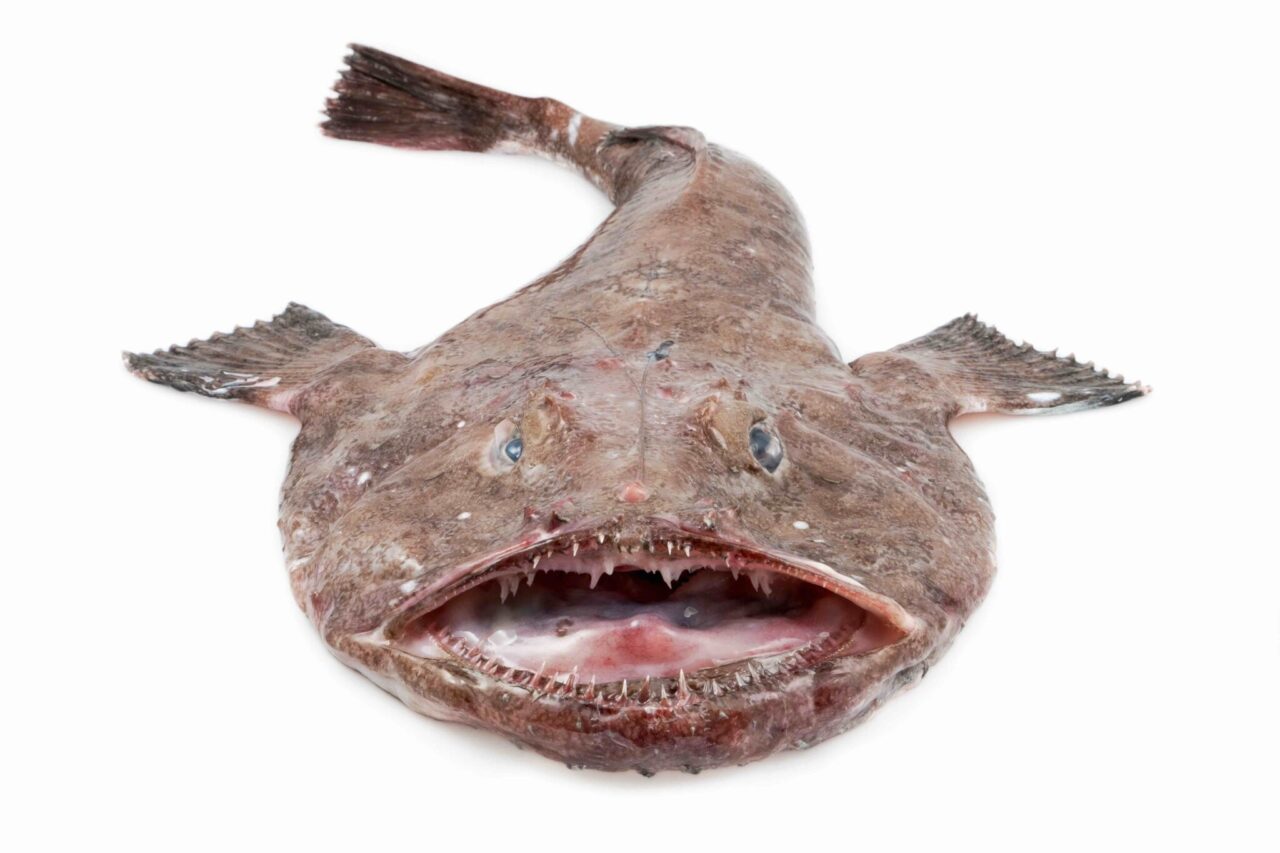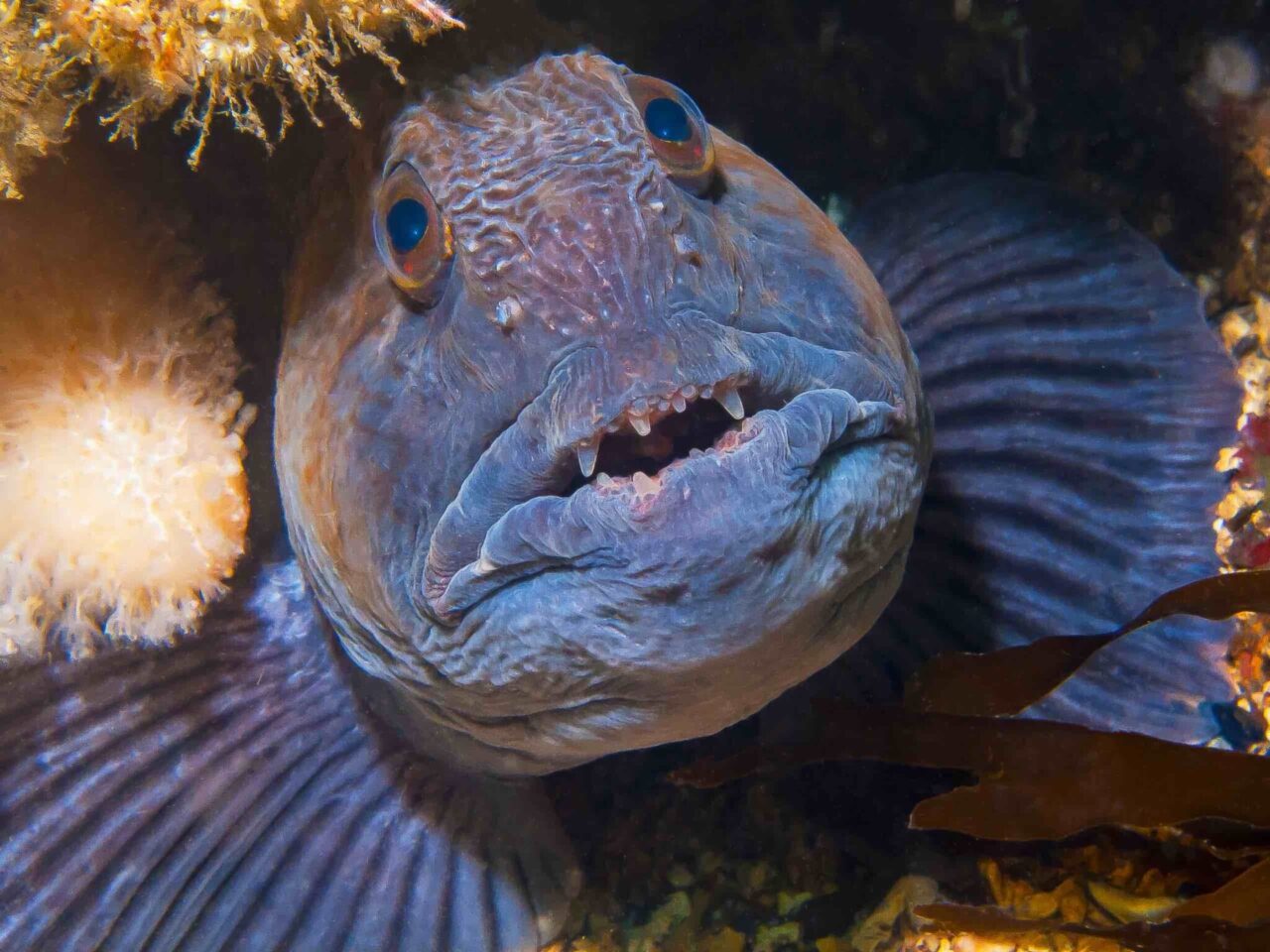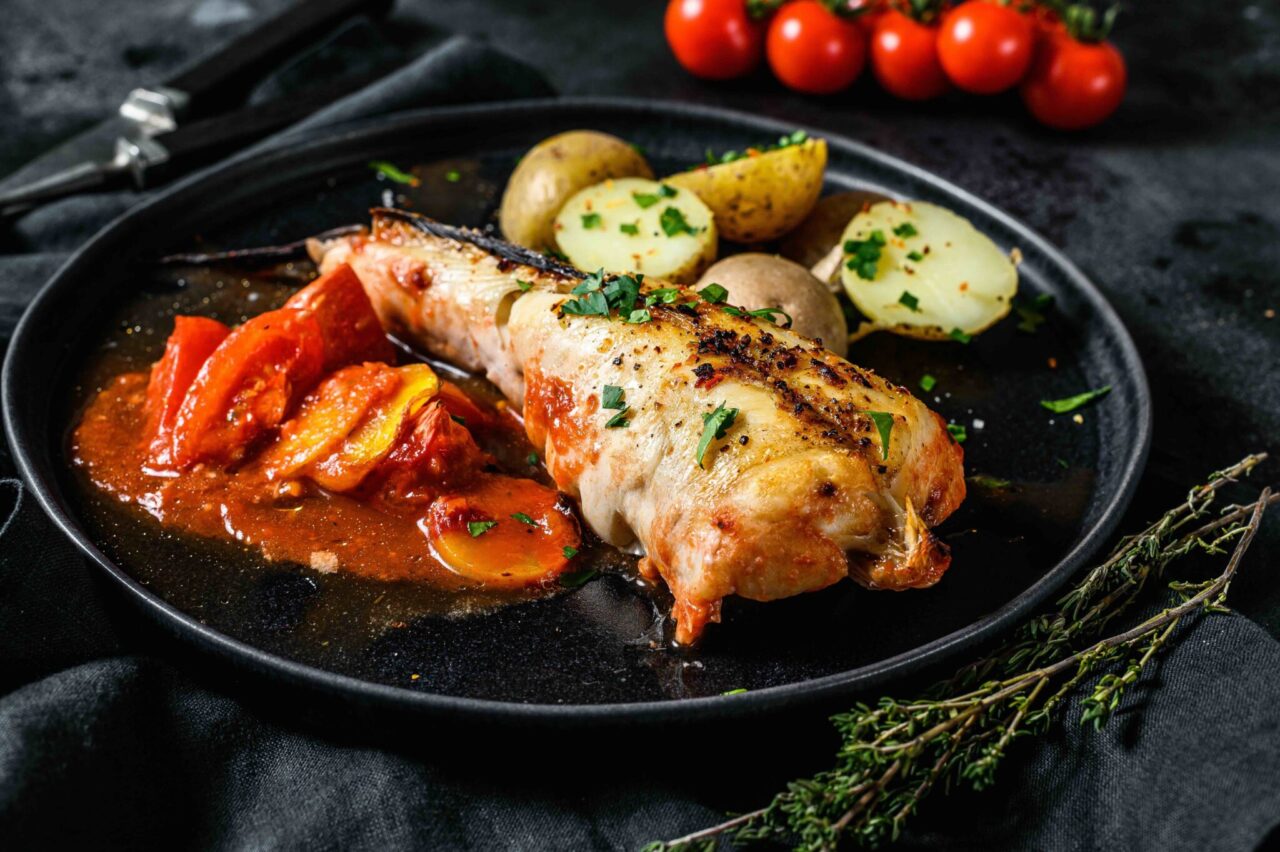Nederlands
English
Deutsch
Français
Anglerfish and wolffish: two fish that both owe their names to their remarkable appearance. They are also known as the ugly ducklings of the fish kingdom. And this is not entirely unjustified. However, appearances are often deceptive, as this statement confirms: anglerfish and wolffish are both genuinely fantastic fish to cook with. So although you would probably prefer not to encounter them in open waters, they are more than welcome on your plate.
Are you a buyer looking for anglerfish, monkfish, or wolffish and don’t quite know the difference between the two? Would you like to know what to look out for when buying anglerfish and wolffish?
This article explains why anglerfish and wolffish are such unique fish, their differences, and how best to cook with them. We also bring you up to speed on the importance of wild anglerfish and wild wolffish and why you should choose fresh or frozen fish.
The topics covered in this article:
Anglerfish (Lophius piscatorius) is a ray-finned fish of the anglerfish species. There are various names for this eccentric animal, such as Lotte, sea-devil, goosefish, abbot, monkfish or allmouth. These are so-called common names and fishers’ names, and as you can see, these vary greatly. In fishery, the latter name – allmouth – is mainly used, or as Mooijer-Volendam simply calls it: monkfish.
There are (almost) always only monkfish steaks or fully filleted monkfish fillets sold in Dutch fish shops. This is partly because the monkfish has a gigantic head. The body of the whole monkfish is flat and brown and tapers off very narrowly. With its large head and a mouth full of pointy teeth, the fish does not look very appealing at first glance, and that is why it is also referred to as a ‘sea-devil’.
However, nothing could be further from the truth. The tail part of the fish has delicious firm flesh, which has a mild, sweetish taste. Because only the rear end of the fish is suitable for consumption, monkfish is known in the Dutch fishing industry as ‘hamvis’ or ‘staartvis’ (steak fish/tail fish).

Wolffish(Anarhichas lupus) is a ray-finned fish, just like monkfish, but from the wolffish species. Like the monkfish, the wolffish owes its name to its remarkable appearance. Its head is much smaller than that of monkfish, but its teeth are perhaps even more monstrous. The colour of the wolffish is blue-grey with dark vertical stripes. Not many people have ever seen a whole wolffish: the fish is almost always sold filleted.

In addition to the external differences between monkfish and wolffish, the anatomy, lifestyle and taste of both fish differ as well.
Wolffish is mainly found in the North Atlantic Ocean on rocky bottoms. Here, this unique fish feeds on shellfish and crustaceans. Wolffish have extremely powerful jaws with solid and blunt teeth to crack the shells. The total length of the fish is up to 1.25 metres, with a weight of up to seven kilograms.
Monkfish is found in both the North Atlantic and the North Sea. They live on the seabed off the coast, up to a maximum depth of 1,000 metres. Here, monkfish feed on macrofauna and all kinds of other fish.
Unlike the wolffish’s large, solid and blunt teeth, monkfish have two whole rows of many small, sharp teeth. The monkfish eats by opening its gigantic mouth and sucking in its prey. It lures its prey using an extensible cord on its dorsal fin, which looks like a fishing rod with bait, which it holds in front of its large mouth. The flexible jaws and expandable stomach allow a monkfish even to eat prey larger than itself. This unique predatory technique is why monkfish are actually called anglerfish (fishing for other fish).
In the past, wolffish was nothing more than a by-product caught in the sole and plaice fisheries. Now that people have discovered how good it tastes, it is caught on a large scale. The same applies to anglerfish. The fish is very popular and one of the most expensive fish species on Dutch menus. Both fish have a non-endangered IUCN status.
It is not just the delicious mild taste of both wolffish and anglerfish that makes them so popular: the fish are also completely boneless. Anglerfish only have one thick backbone in the middle of the tail: this can be removed in one go, leaving two beautiful fillets without any annoying little fish bones. If you include the fact that the fish meat is very firm and does not fall apart during preparation, you have the perfect fish fillet to start with!
Anglerfish tastes soft and sweet, whereas wolffish has its own unique flavour. The preparation methods for anglerfish, wolffish and salmon are similar: all three accessible types of fish can be pan-fried, baked, grilled, steamed, barbecued, or enjoyed as chunks in curries and soups.
Would you like to see some anglerfish recipes or recipes for wolffish? How about a delicious anglerfish pasta or grilled or roasted monkfish with black olive sauce and lemon mash? Or a delicious casserole or curried wolffish stew? The variations are endless… enjoy!

As a buyer, it is essential that you know what to look out for when buying anglerfish and wolffish. For example, the whole fish must still be shiny – sometimes even slimy almost. If the fish arrive already filleted, it is important to inspect the fillets carefully. Are they white and fresh and not, for example, pinkish? You might be dealing with filleted fish imported from Asia; those fillets are pink instead of white. These are the kinds of anglerfish and wolffish products you don’t want.
Anglerfish is at its best from July to March, and the best fishing season for wolffish is from mid-February to May. Fresh, wild anglerfish and wolffish are often available both fresh and frozen; if frozen anglerfish or wolffish are caught and frozen at the right time, this should not be a problem as the frozen fish will be of optimal quality when thawed.
At Mooijer-Volendam, we drive to the fish auction every day to inspect the freshly caught fish. Fresh anglerfish or fresh wolffish is only purchased and offered to our customers once our experienced buyer is convinced that the catch meets the quality requirements that we impose.
Are you a buyer looking for good-quality fresh monkfish or wolffish, and are you curious about Mooijer-Volendam’s full range of monkfish or wolffish? At Mooijer-Volendam we always have ocean-fresh monkfish and wolffish. Mooijer-Volendam can always guarantee the best quality because we drive to the fish auction to examine the freshly caught fish every day. If you are a buyer looking for fresh monkfish or wolffish, you have come to the right place.
Are you looking for good-quality monkfish and wolffish? Then you have come to the right place. As a wholesaler, Mooijer-Volendam sets high standards for its quality and, therefore, for all our fresh monkfish and wolffish products. Our customers can rely on AAA product quality, which our customers also demand from us.
That is why more and more customers choose us as their wholesale partner in the catering industry or as a wholesaler to fish shops, Asian shops, specialist retailers and large retailers.
Would you like to know more about our monkfish and wolffish?